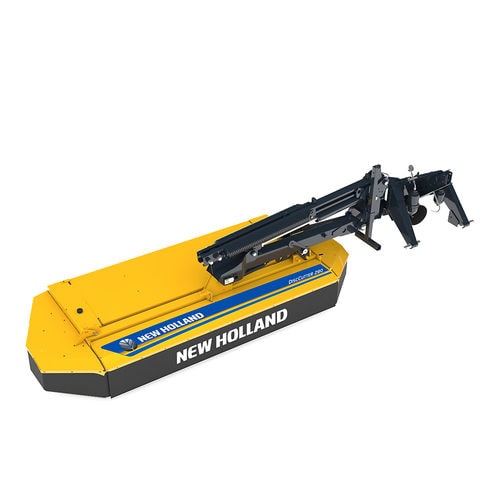
- Farm Machinery
- Hay & Forage
- Rear-mount mower
- NEW HOLLAND

- Products
- Catalogs
- News & Trends
- Exhibitions
Rear-mount mower DuraDisc™ Fmounteddisc16 blades
Add to favorites
Compare this product
fo_shop_gate_exact_title
Characteristics
- Mounting
- mounted, rear-mount
- Technology
- disc
- Number of blades
- 16 blades, 14 blades, 12 blades, 18 blades
- Number of discs
- 7 discs, 8 discs, 9 discs
- Other characteristic
- PTO-driven
- Working width
2.37 m, 2.77 m, 3.11 m, 3.52 m, 3.86 m
(7'09" , 9'01" , 10'02" , 11'06" , 12'07" )- Power required
Max.: 95 ch
(95 hp)Min.: 48 ch
(48 hp)- Swath width
Max.: 3.3 m
(10'09" )Min.: 1.2 m
(3'11" )- PTO speed
540 rpm, 1,000 rpm
(3,392.9 rad.min-1, 6,283.2 rad.min-1)- Weight
Max.: 1,060 kg
(2,336.9 lb)Min.: 495 kg
(1,091.3 lb)
Description
The DuraDisc™ non-conditioning range of rear mounted mowers is available in 2.37 to 2.77 metre cutting widths and benefits from a mechanical flotation system, designed to always follow ground contours. The five-model rear mounted pendulum suspended DiscCutter™ mower range is available in 2.77 to 3.86 metre cutting widths, meaning operators can choose the perfect mower, whether working in narrow, irregular shaped fields, or large open spaces. The 2.77 and 3.11 metre DiscCutter™ models can be fitted with the optional PE-finger conditioner for improved wilting performance.
State-of-the-art manufacturing
New Holland’s advanced and modern manufacturing centre in Kutno, Poland, is a Centre of Excellence for hay and forage equipment, with design, testing and manufacture all centred in this plant. Following key manufacturing principles, rigorous manufacturing and quality standards are upheld by a committed workforce, to deliver outstanding quality, durability and reliability.
A history of excellence
The New Holland brand has become synonymous with hay and forage excellence, an unbroken bloodline which stretches back more than a century. It is fair to say, New Holland has changed the face of agriculture in this area with revolutionary breakthroughs including the first self-tying pickup baler in 1940, advances in mower technology with the first Haybine® mower conditioner in 1964 and its first self-propelled forage harvester in 1961, are all testament to an insatiable desire to move hay and forage activities forwards.
Catalogs
No catalogs are available for this product.
See all of NEW HOLLAND‘s catalogsExhibitions
Meet this supplier at the following exhibition(s):

Related Searches
*Prices are pre-tax. They exclude delivery charges and customs duties and do not include additional charges for installation or activation options. Prices are indicative only and may vary by country, with changes to the cost of raw materials and exchange rates.


